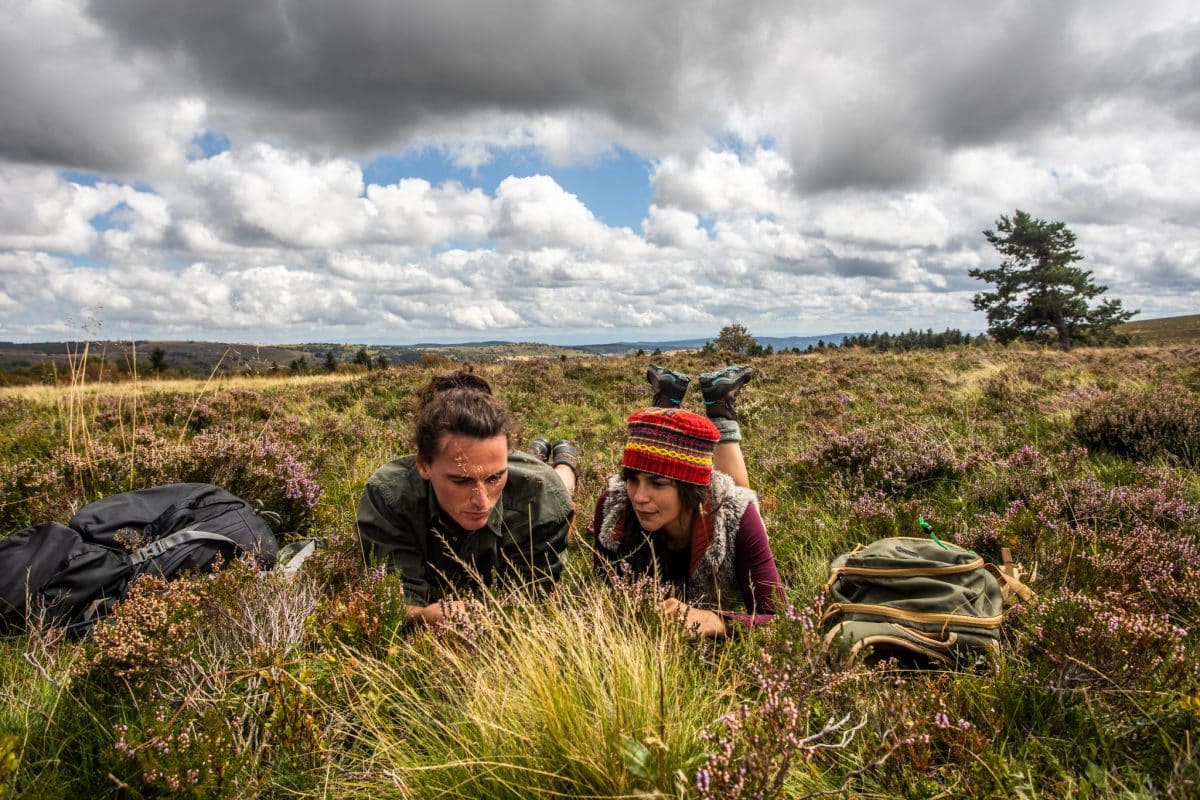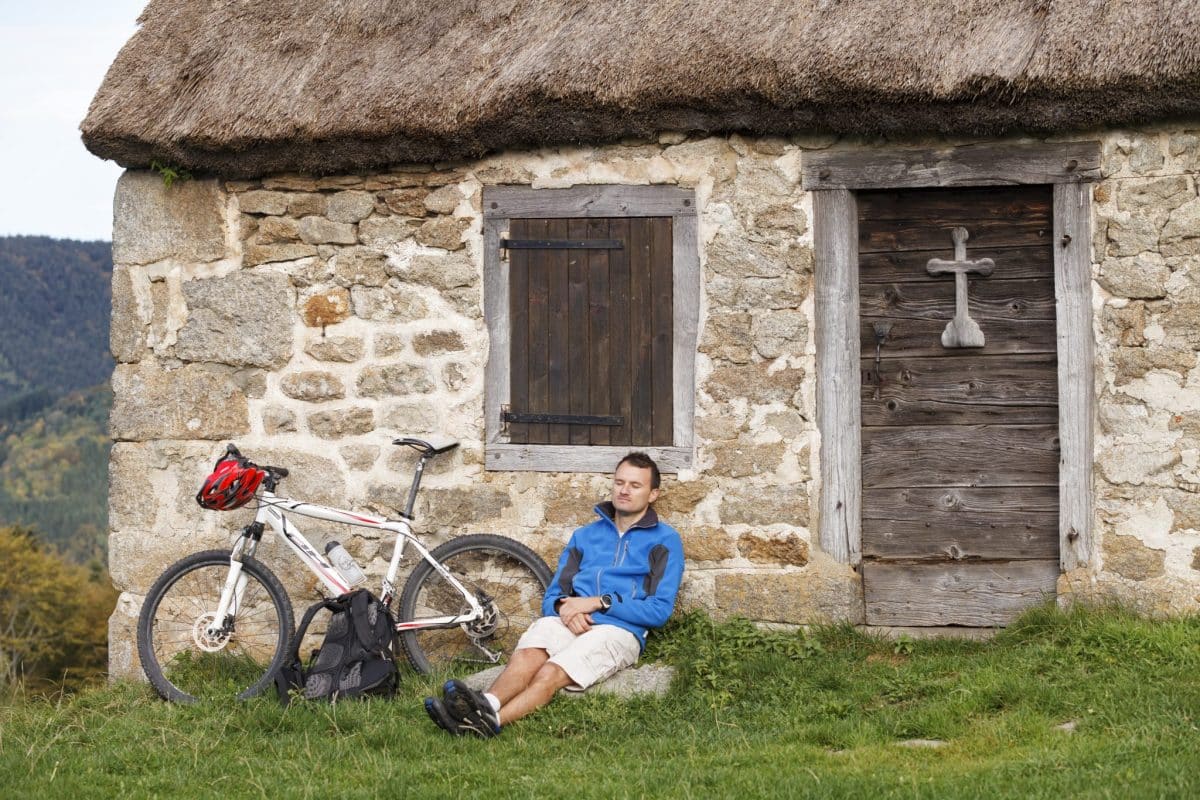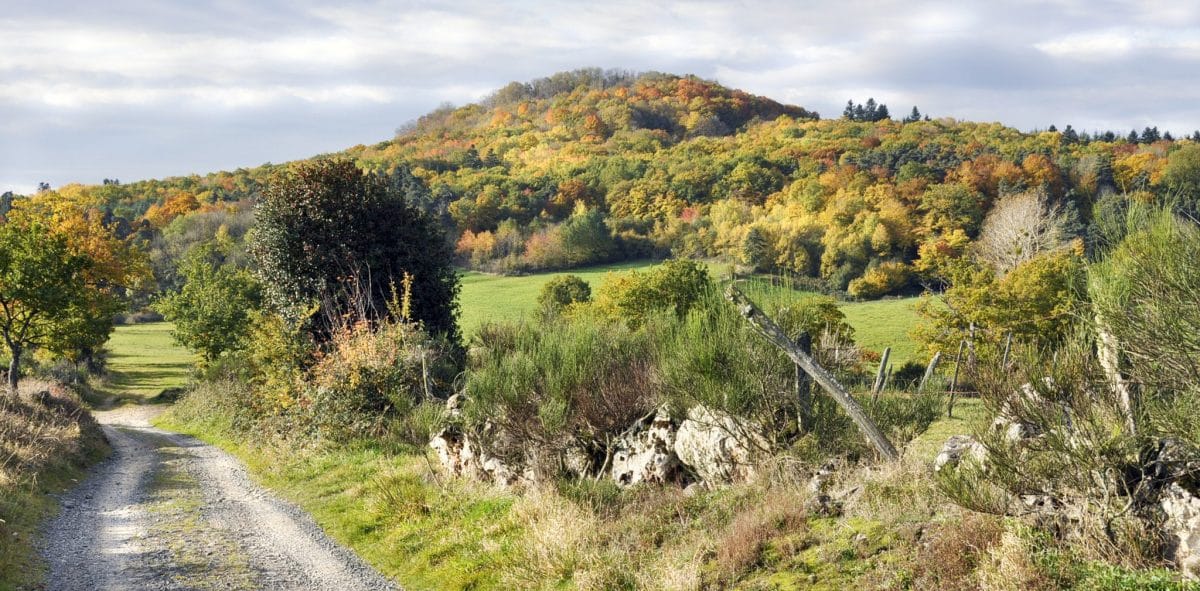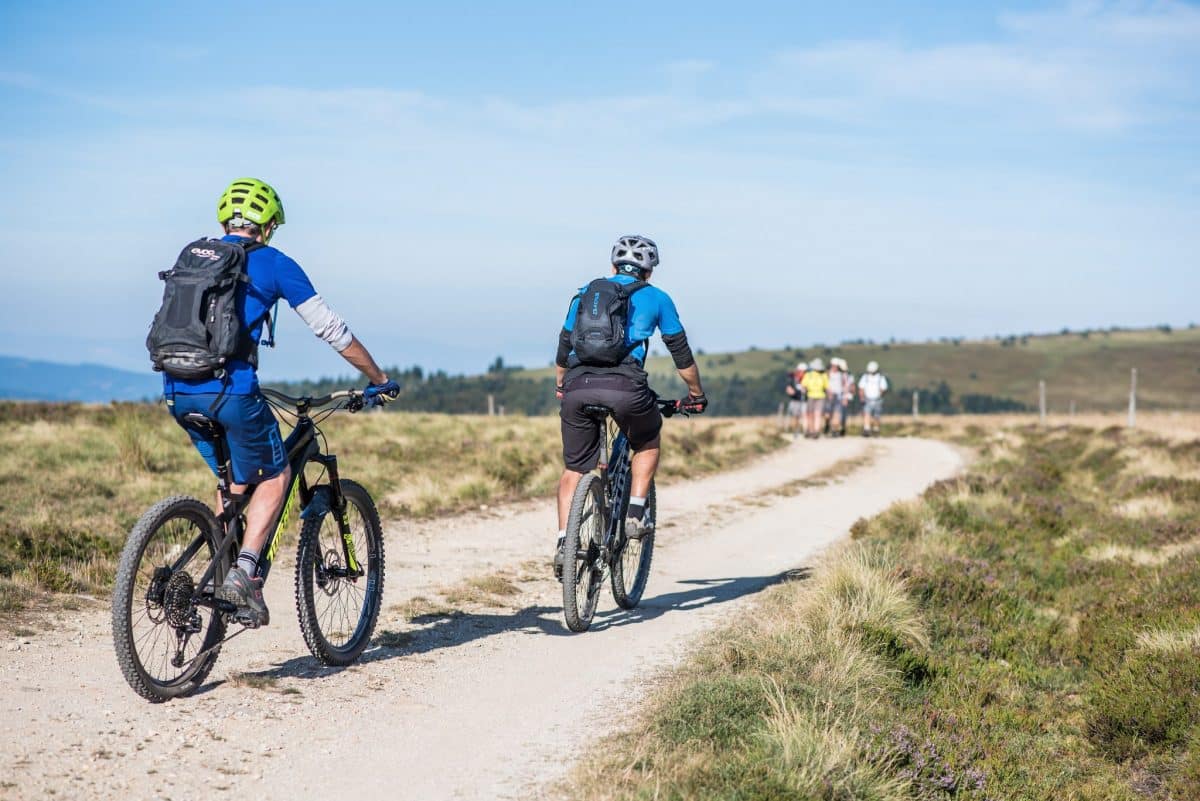Sustainable tourism in Auvergne: Livradois-Forez
Come take a breath of fresh air, wilderness !
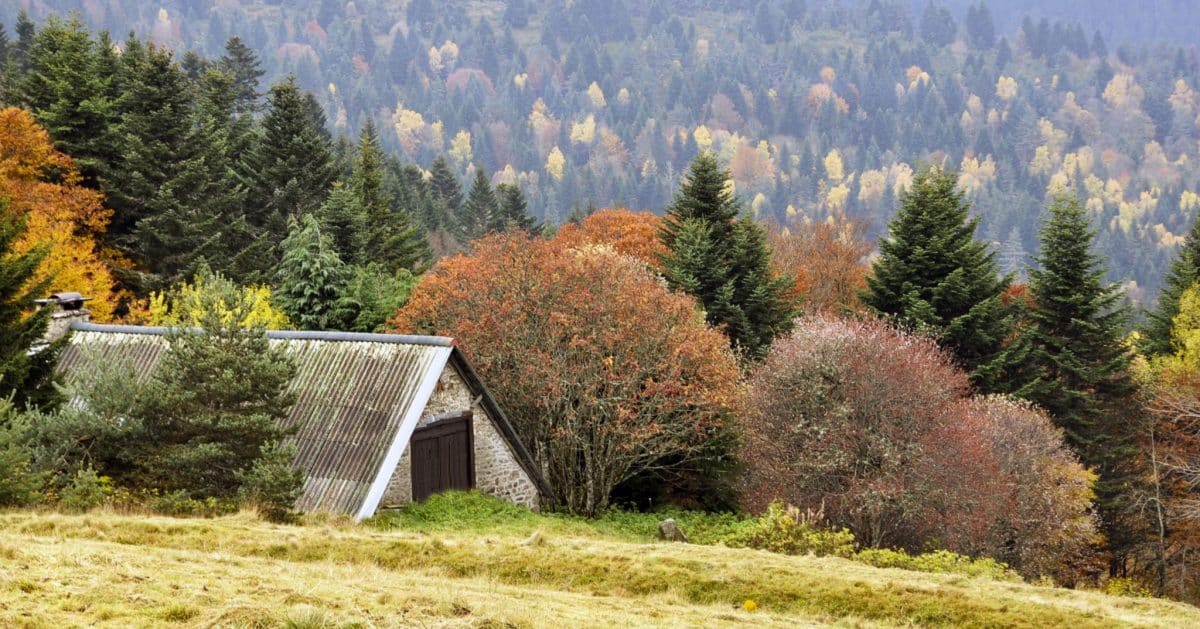
Le Livradois-Forez Regional Natural Park, extends over three departments: Puy-de-Dôme, Haute-Loire and Loire. Explore the 311 hectares between forests, plains, rivers and many other landscapes. Here, in Auvergne, a benevolent and environmentally friendly tourism is possible. Livradois-Forez, rich in its natural and cultural heritage, builds its identity on its particularities by striving to preserve them. As a result, the great environmental challenges of this century are also ours. Discover the sustainable tourism in Auvergne.
A wide variety of natural environments is present on the territory. Its geography is such that nature is very close. A territory of contrast, Livradois-Forez is made up of remarkable fauna and flora. To preserve this natural space, the Park carries out studies, relies on a network of naturalist contributors and on the surveys of its agents. Better know the biodiversity to better protect it.
A responsible label: Regional Natural Park Values
The “Valeurs Parc naturel régional” brand is an initiative of the Federation of Regional Natural Parks of France.
It allows businesses located in a regional natural park to engage in collective and supportive initiatives, thus contributing to sustainable development. By adopting this brand, companies commit to preserving the environment, improving the well-being of residents and supporting the local economy. The parks, in return, work with these companies to promote the unique natural and cultural resources of each territory. The attribution of this brand is done through a rigorous contractual commitment to sustainable development.
The Livradois Forez Regional Natural Park is committed to diversity with the Green and Blue Contract:
The “Green and Blue Contract” of the Livradois-Forez Regional Natural Park is a committed project aimed at protecting and enriching the diversity of the ecosystems it shelters.
Focused on the Dore watershed, this project extends over six years (2020-2025) and focuses on key actions such as improving aquatic and wet environments, strengthening biodiversity in forests and open spaces. agricultural, and the integration of green and blue networks in town planning.
Through 64 detailed actions, the contract aims to restore waterways, diversify forests, encourage agricultural practices that respect biodiversity and raise public awareness of the importance of ecological continuities. This project represents a strong commitment by the park to the protection and enhancement of its natural heritage.
Do you know the green, blue and black frames?
“Imagine our environment as a large puzzle where each piece is a natural habitat.
The green, blue and black frames are like paths that connect these pieces.
The green network connects land spaces such as forests and meadows, allowing animals and plants to move and flourish.
The blue frame does the same thing, but for aquatic environments such as rivers and lakes, ensuring the circulation of water and aquatic species.
Finally, the black frame tackles a less visible problem: light pollution. By preserving areas of darkness, it helps protect the nocturnal life of animals and the starry sky.
Together, these frameworks help maintain a healthy and diverse environment for all living things.
Focus on Natura 2000 sites:
The link between Natura 2000 and the green, blue and black networks lies in their common objective of preserving biodiversity and ecosystems. Natura 2000 is a network of natural sites across Europe, designed to protect rare or threatened species and habitats.
Together, Natura 2000 and ecological frameworks form an integrated network promoting the continuity of habitats and ecological connectivity across the landscape.
The Livradois-Forez Regional Natural Park is home to six sites listed in the Natura 2000 network:
- The mining cavity of Auzelles
It is located in the Miodet valley, a tributary of the Dore. It is home to colonies of bats in transit between hibernating and breeding roosts.
- The Senouire valley mining complex
It covers 2181 hectares spread over eight municipalities and is essential as a hibernation and breeding area for bat species, notably the Lesser Horseshoe Bat and the Greater Horseshoe Bat. The protection of this site is crucial, not only to conserve essential bat habitats, but also to preserve the quality of their hunting areas.
- La Pause mining cave
It is located in the Couzon valley, in the commune of Aubusson d’Auvergne. It is a hibernation site for the lesser horseshoe bat.
- The Dore and the Tributaries
The main tributary on the right bank of the Allier river, La Dore plays a key role in the regional ecosystem. It is an important migratory route for Atlantic salmon. It is home to tributaries which are natural habitats for white-clawed crayfish, a species of ecological interest.
- The mountains of Forez
This site is mainly made up of the Hautes-Chaumes du Forez, a vast area of moorland and meadows at altitude. The site is home to peat bogs, rich wetlands and rocky scree, providing habitat for many rare species, both animal (butterflies and bats) and plant. Traditional management of these lands is essential to maintain this ecological diversity.
- The plain of Varennes
This site is home to continental dunes, forests and wet meadows, ponds, ponds and hay meadows. It also serves as a refuge for many important animal and plant species, whose survival is closely linked to the conservation of hedgerows and low-intensive agricultural practices.
- The pearl mussel rivers of Ance du Nord and Arzon
With around 6 individuals, the population of pearl mussels in Ance du Nord is one of the most significant in Auvergne, or even in France, where it is estimated that there are 500 individuals in total. The presence of young people in this functional population requires special attention for its conservation.
- The Haut-Livradois peat bog Virennes peat complex
A peat bog is a type of wetland characterized by soils saturated with water, where layers of peat accumulate, an organic material formed mainly from sphagnum moss (mosses) and other decomposing plants. The Tourbière de Virennes, in Haut-Livradois, is an example of an acidic sphagnum peat bog, located at an altitude of 1090 to 1180 meters.
Do you know pearl mussels?
This species is ecologically important because it contributes to the filtration and purification of water in the waterways where it lives. Pearl mussels are also an indicator of the health of river ecosystems, as they require very good water quality to survive. Unfortunately, they are now under threat due to pollution, habitat modification and other environmental factors.
Sustainable travel in Livradois-Forez
Do you want to set up your bivouac in the very heart of nature for one night?
It is possible to combine “respect for nature” and “responsible stay” in Livradois-Forez. Little advice from the Maison du tourisme, to bivouac peacefully:
Settle around the shelters, some offer specialized locations.
Ask private landowners if it is possible to pitch your tent on their premises for a night. However, it is strongly recommended not to make a fire.
This has a lasting impact on natural spaces as well as the fauna and flora they shelter.
Practical Guide for bivouac in the Livradois-Forez Regional Natural Park
There are no specific regulations for the Livradois-Forez PNR; French regulations apply.
- Ban on bivouac:
- On public roads.
- Less than 500 m from a historic monument.
- Less than 200 m from a water point intended for consumption.
- In national nature reserves, state biological reserves, and areas defined by decree.
- Where to bivouac?
- Bivouac is tolerated as part of a traveling hike.
- Installation permitted at sunset and must be folded at sunrise.
- Need to obtain the agreement of the owner of the land, private or public.
- Specific Restrictions
- Camping prohibited in the Haut Forez classified site, but bivouac is authorized.
- It is prohibited to light fires within 200 m of the edge of a wood or forest.
- Only land owners and their beneficiaries may light fires on their property.
- Recommendations for a Respectful Bivouac
- Leave the site clean: take away all waste and personal hygiene products.
- Restore the site to its initial state after the bivouac.
- Be discreet so as not to disturb the wildlife, especially during the breeding and nesting periods.
Committed service providers
If you’re not in the mood to “bivouac” in the great outdoors, don’t worry! You can stay with service providers involved in the “Regional Natural Park Values” approach. This approach is respectful of nature, the environment and heritage.
Find the list of service providers involved below. Come and meet them, the journey begins here, it’s up to you to enjoy it.


